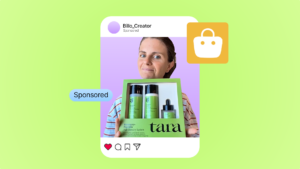Getting Sales on Shopify: A Deep Dive Into E-Commerce
After bouncing around tech start-ups and university literature programs, Joe has finally settled down as Billo’s Head of Content. Joe now spends his days writing ads about ads, teaching clients how to craft killer content, and combing through our web copy with a bold red Sharpie.
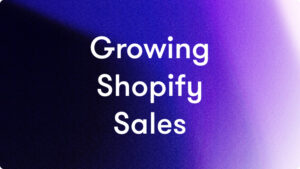
So, you’ve found a winning product and set up your Shopify store. You’ve done all the essentials, like creating social media accounts and being active there, and now you’re at a pivotal moment, waiting for the sales to start rolling in.
But here’s a quick reality check: there are more than 2 million Shopify stores live at this moment.
This number might seem daunting at first—do you view it as having 2 million competitors? Or does this number mean there’s a wealth of know-how and strategies out there, ready for you to make the most of them?
We recently covered 29 free strategies to promote your Shopify store on a budget, highlighting the importance of visibility and traffic. Yet, drawing visitors to your store is just one piece of the puzzle.
The real challenge—and opportunity—lies in converting that interest into actual sales. After all, it’s one thing to promote your store and another to see the virtual cash register ring.
Let’s take a deep dive into how you can turn browsers into buyers and truly get the sales ball rolling.
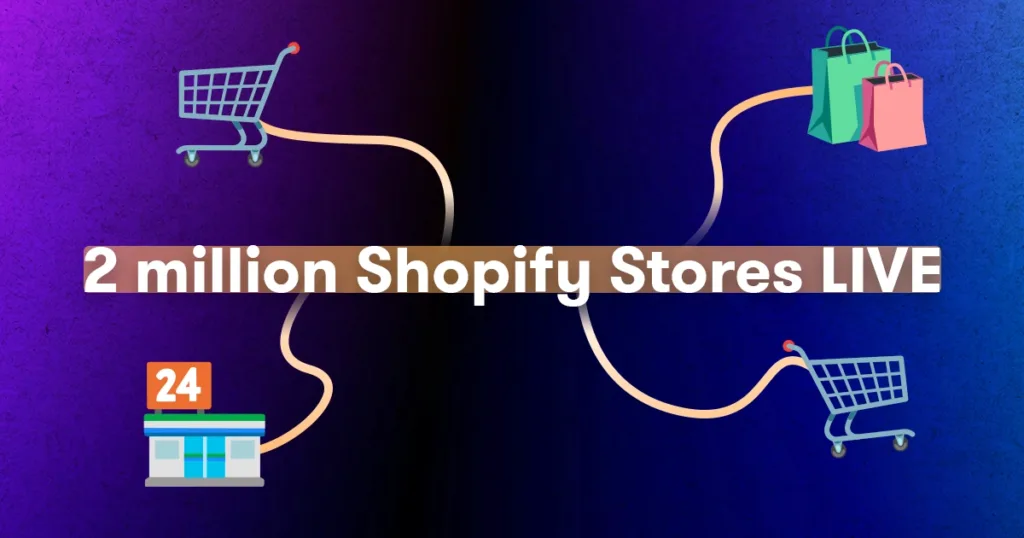
1. Leverage Nano and Micro-Influencer Partnerships
One of the quickest ways to gain visibility and credibility for your store is through influencer marketing.
Enhancing your e-commerce strategy with streamlined and concise marketing content can set your Shopify store apart in a crowded marketplace. Implementing tools like a paragraph shortener can assist businesses in creating crisp messages that maintain clarity yet do not overwhelm consumers with excessive information. Condensing lengthy descriptions, promotional content, or even user testimonials positively impacts readability and engagement quality. With the ability to generate summaries on-the-go, like outlines for new campaigns or product updates, businesses stand a better chance of capturing and retaining customer interest.
They don’t have to be huge celebrities. Nano-influencers (between 1,000 and 4,999 followers) and micro-influencers (between 5,000 and 20,000 followers) are particularly valuable for new stores. They tend to have a more focused niche, and their recommendations can feel more personal and genuine to their followers.
In fact, nano-influencers have the highest engagement rates at 2.53%, while celebrity-level influencer (1M+ followers) engagement caps at 0.92%.
Collaborating with these influencers is usually more cost-effective and can yield a higher ROI in terms of engagement and conversions compared to larger influencers or celebrities.
To kickstart a successful influencer campaign, consider the following steps:
- Research and reach out. Use social media platforms, influencer marketplaces, or tools to find influencers that align with your brand’s values and aesthetic. Once you’ve identified potential partners, reach out with a personalized message that explains why a collaboration would be mutually beneficial.
- Collaborate on content. Work closely with influencers to create content that feels authentic to their style while showcasing your products. Whether it’s a product review, an unboxing video, or lifestyle shots, the content should resonate with their audience and naturally highlight the value of your offerings.
- Offer exclusive promo codes. Providing influencers with exclusive promo codes for their followers not only incentivizes purchases but also allows you to track the effectiveness of each partnership.
- Leverage multiple platforms. Encourage influencers to share content across their platforms, from Instagram and TikTok to YouTube and blogs, to maximize reach. Each platform offers unique formats for product showcasing, from in-depth video reviews on YouTube to casual product mentions in Instagram stories.
- Monitor and measure success. Use analytics tools to track the traffic, engagement, and sales generated from influencer partnerships. Monitoring these metrics will help you understand which partnerships are most beneficial and guide future influencer marketing strategies.
- Build long-term relationships. Rather than viewing influencer collaborations as one-off transactions, aim to build lasting partnerships. Influencers who genuinely love your brand can become long-term ambassadors, continually introducing new audiences to your products over time.
The key is to ensure their audience matches your target demographic. A well-executed influencer campaign can drive immediate traffic to your store and result in your first sales
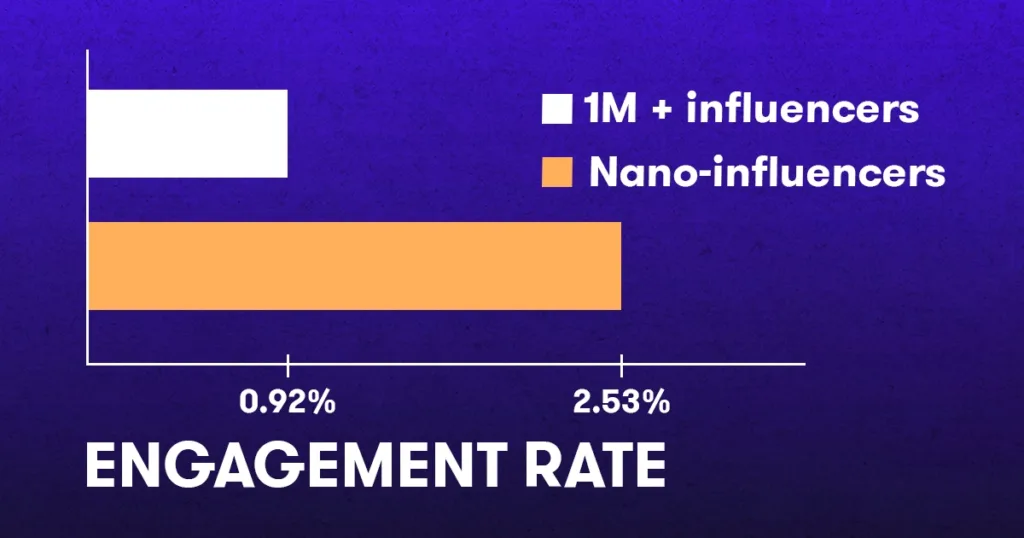
2. Utilize Email Marketing
Email marketing is a powerful tool for driving sales on your Shopify store because it lets you directly communicate with people who’ve shown interest in your products. But how to start and what to focus on?
First, you need a list of emails. Make sure your Shopify store has a sign-up form where visitors can subscribe. Offer an incentive for signing up, like a discount or free shipping on their first order. The more creative your offer is, the better the chance of people leaving their emails, so don’t be afraid to think outside the box as well.
Next: Segmentation. All it basically means is dividing your email list into different groups based on specific criteria. For Shopify, you can begin by focusing on these two segments:
- Newsletter signups.
- Cart Abandoners: Visitors who added products to their cart but didn’t complete the purchase.
Now, craft email campaigns tailored to each segment.
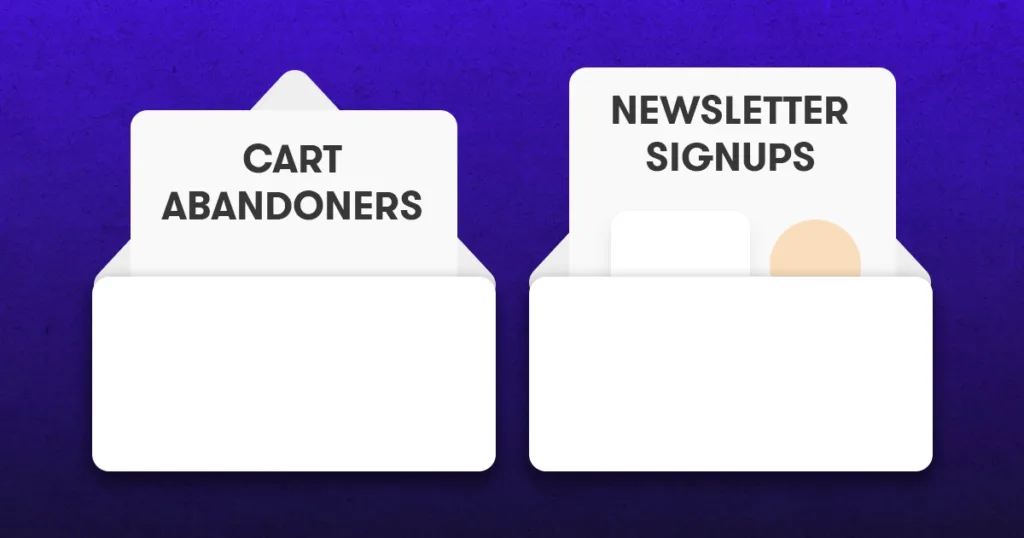
For cart abandoners: Send a series of emails (usually 2-3) reminding them of what they left in their cart. The first email can go out a few hours after abandonment, the next one the following day, and perhaps another a few days later.
In these emails, include pictures of the products they abandoned, offer help in case they faced issues during checkout, and consider giving a small discount or free shipping to encourage them to complete their purchase.
For newsletter signups: Offer value right away to keep their interest. This could be a one-time discount code, a free shipping offer for their first purchase, or a valuable piece of content (like a guide or tutorial related to your products). The goal is to incentivize them to make their first purchase or engage more deeply with your brand.
You can also highlight some of your best-selling products or most popular content. Use high-quality images and engaging descriptions. For products, briefly explain why they’re popular or what problem they solve. For content, summarize the key takeaways or benefits of reading/watching it.
Shopify integrates with several email marketing platforms (like Klaviyo, Mailchimp, or Omnisend) that can automate this process for you. These tools can automatically send out your targeted campaigns to the right segments at the right times, and they provide valuable analytics to help you refine your strategy.
Also, testing is crucial. Try different subject lines, email content, and sending times to see what works best. Look at open rates (how many people open your emails) and click-through rates (how many people click on links within your emails) to make informed marketing decisions.
Focus areas for sales:
- Personalization: Use the customer’s name and reference their specific actions or preferences. Personalized emails often have higher engagement rates.
- Value proposition: Always highlight the value for the customer, whether it’s exclusive offers, product recommendations, or helpful information.
- Clear call-to-action (CTA): Each email should have a clear CTA, like “Shop Now,” “Complete Your Purchase,” or “See What’s New.” Make it easy for recipients to take the next step.
- Timing and Frequency: Pay attention to when and how often you send emails. You don’t want to overwhelm your subscribers, but you want to stay on their minds. Experiment (test!) to find the right balance.
Start simple, learn from your results, and continuously optimize your approach.
3. Optimize Your Product Pages
This one requires patience and a lot of testing but is absolutely crucial for converting visitors into buyers on your Shopify store. Here’s a more detailed look at how to approach product page optimization:
High-Quality Product Images
- Multiple angles: Provide images from various angles to give a comprehensive view of the product.
- Zoom: Include high-resolution images that allow users to zoom in and see product details.
- Lifestyle shots: Show your product in use, which helps customers visualize how they might use it as well.
- Consistency: Maintain a consistent style for all your product photos to improve the overall look of your store (+ this makes you look way more credible).
Detailed and Engaging Product Descriptions
- Benefits over features: Focus on how the product can solve a problem or improve the customer’s life, not just on its features.
- Bullet points: Make the description easy to scan by using bullet points for key features or benefits.
- SEO: Include relevant keywords naturally in your product descriptions to help your pages rank higher in search engine results.
- Tell a story: Where applicable, tell the story behind the product or brand to create an emotional connection.
A/B Testing for Optimization
What is A/B testing? A/B testing, also known as split testing, involves comparing two versions of a webpage (A and B) to see which one performs better in terms of converting visitors into customers.
- Test layouts: Experiment with different layouts of your product page to find what layout leads to higher conversions. For example, test the placement of product images, descriptions, and the add-to-cart button.
- Test images and copy: Try different images and variations of your product descriptions to see which ones resonate more with your audience.
- CTA buttons: Experiment with the color, size, and wording of your CTA buttons. Sometimes, minor changes can lead to significant improvements in click-through rates.
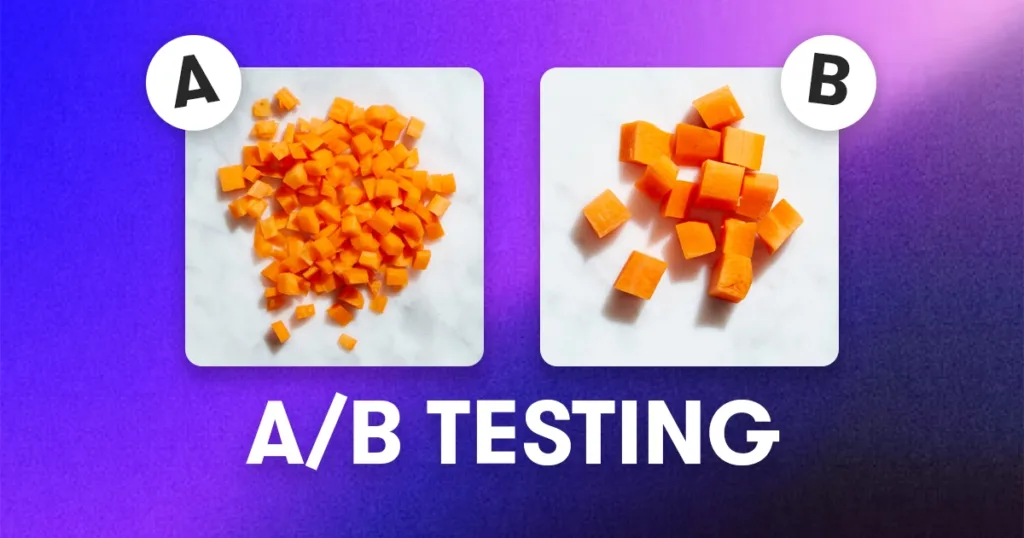
Steps for A/B Testing
- Identify the goal. Clearly define what you’re trying to improve, whether it’s increasing the add-to-cart rate, reducing bounce rates, or boosting overall sales.
- Create two versions. Design two versions of your product page with one (emphasis on “one”) key difference between them. For instance, version A could have a single large product image, while version B uses multiple smaller images.
- Split your traffic. Use A/B testing tools (many email marketing platforms and Google Optimize offer this functionality) to direct equal parts of your traffic to each version of the page.
- Analyze results. After collecting sufficient data, analyze which version performed better. Look at metrics like time on page, bounce rate, and conversion rate.
Best Practices for A/B Testing
When you’re trying to figure out what works best, it’s important to test one change at a time. This way, you can clearly see what made the difference.
Imagine you’re experimenting to find out which fertilizer makes your plants grow faster. If you use two different fertilizers for one plant at the same time, you won’t know which one is working. By changing just one thing, you can be sure about what caused any changes you see.
Also, you need to give your test enough time to see real results. Wait a few weeks or until you have enough information to really understand what’s happening. Patience helps you make better decisions because you’re basing them on solid evidence.
Remember, making things better is an ongoing process. It’s not about doing one test and then stopping. Keep trying new things and seeing how they work.
By focusing on high-quality images, engaging product descriptions, and using A/B testing to find the most effective layout and content, you can significantly improve the performance of your product pages and increase sales.
4. Offer Exclusive Limited-Time Deals
You’ve probably heard the phrase “Create an offer that’s too good to pass up.” one too many times.
But there’s actual wisdom in those words, especially when launching a new product or store. Crafting a great offer not only captures attention but also acts as an incentive, turning casual browsers into enthusiastic buyers.
A compelling offer involves more than just slashed prices or bundled products. It’s about creating value that speaks directly to your customers’ desires and needs.
Here’s how you can refine your approach to designing a genuinely irresistible offer:
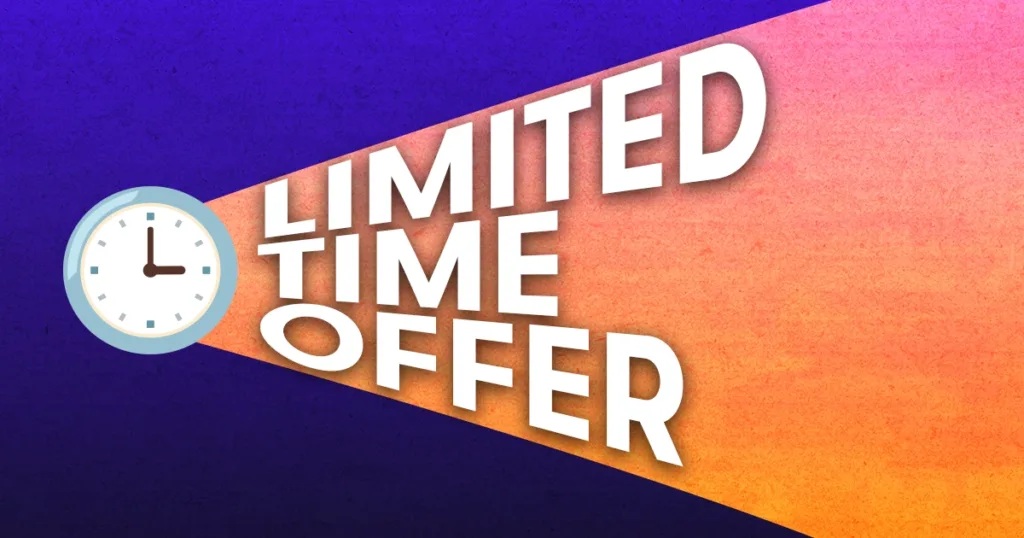
Understand Your Audience
Deeply understanding who your customers are, what they value, and the challenges they face is crucial. Use this insight to tailor your offer in a way that resonates with them. For example, if your target audience values sustainability, consider offering a product bundle that emphasizes eco-friendly benefits.
Add Unique Value
Instead of just offering a discount, think about what unique value you can add that makes the deal feel special. This could be an exclusive item not available for regular purchase, a personalized product option for the first 100 orders, or a membership to a VIP customer club with ongoing benefits.
Create a Bundle That Makes Sense
When considering a bundle deal, choose products that complement each other and boost the user experience. For example, if you’re selling coffee machines, a bundle could include special coffee blends, a grinder, and a cleaning kit. The idea is to offer a complete solution that feels personalized and thoughtful.
Limit Availability
Making your offer limited in terms of availability (e.g., “only available to the first 50 customers”) adds a layer of exclusivity that can drive action. People tend to value what’s scarce more highly, making your offer more desirable.
Offer a Money-Back Guarantee
A money-back guarantee removes the risk for the customer, making your offer more enticing. It shows confidence in your product’s quality and commitment to customer satisfaction, which can be the final nudge a hesitant buyer needs to make that purchase.
Test and Refine Your Offer
Before rolling out your offer to everyone, consider testing it with a small segment of your audience. Gather feedback on what they liked or didn’t like and use this information to refine your offer. Testing different aspects of your offer (e.g., the discount rate, bundle components, or messaging) can help you discover what works best.
Lastly, make sure to promote this offer through all your channels, including any social media platforms, your website, and through any influencers or partners you work with.
Remember, being creative with your offers is not just beneficial; it’s essential.
Every brand is fighting for attention, often employing similar tactics like discounts or bundled deals. However, to truly stand out and capture the hearts (and wallets) of customers, your offers need to break from the norm and spark interest in unexpected ways.
Creativity in your promotions doesn’t just differentiate your brand; it builds a narrative that customers are eager to be a part of.
By thinking outside the box—whether through offering unique experiences, tying purchases to social causes, or gamifying the shopping process—you create offers that resonate with customers.
5. Launch Retargeting Campaigns
Retargeting works by using cookies to follow your site visitors across the web and displaying your ads on the various platforms they visit after visiting your Shopify store.
When setting up retargeting campaigns, focusing on the products that visitors viewed or added to their cart is crucial. This personalized approach makes the ads more relevant, increasing the chances of conversion.
In fact, numbers show that retargeted users are up to 70% more likely to convert and choose you instead of your competitors.
To get started, you’ll need to track and segment your visitors: Use tracking pixels from your chosen advertising platform like Google Ads or Facebook Pixel.
Segment these visitors based on their actions, such as:
- those who added items to their cart but didn’t complete a purchase,
- those who viewed certain product pages,
- those who spent a significant amount of time browsing but left without taking action.
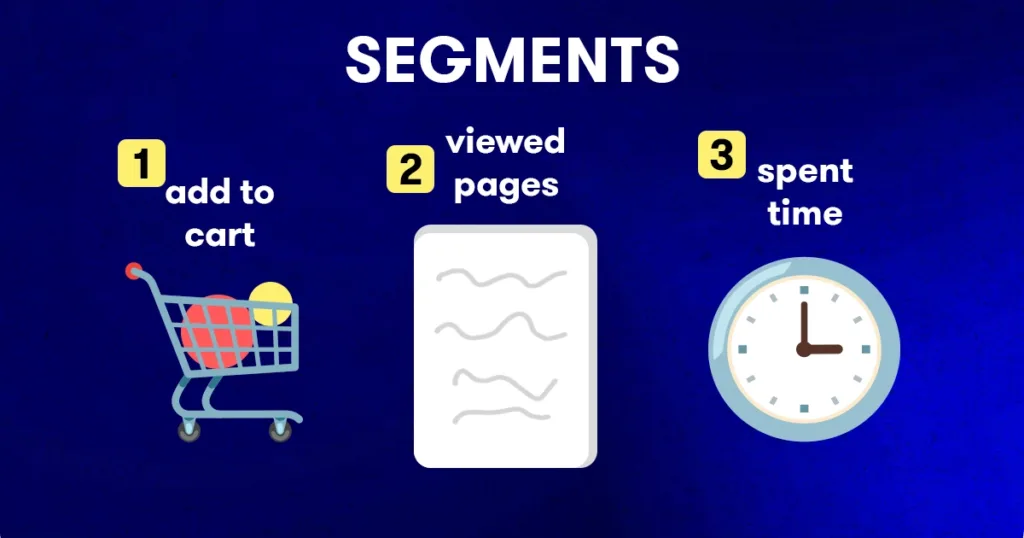
This way, you can tailor your retargeting campaigns to match their level of interest.
Next, personalize your ads. For visitors who showed interest in specific products, create ads that showcase those exact items. If possible, include images, prices, and any special offers or discounts related to the products.
Timing is key and it can significantly impact the effectiveness of your retargeting ads.
For example, retargeting a visitor immediately after they leave your Shopify store can be effective, but you might also want to set up a schedule that continues to show your ads at strategic intervals (e.g., after a few days and then again after a week). Test different timing strategies to find the most effective pattern for your audience.
Like any other marketing effort, it’s super important to measure the performance of your retargeting campaigns: Look at metrics such as CTR, conversion rate, and ROAS to understand how well your ads are doing. Use this data to tweak your campaigns and test different ad creatives, offers, and targeting criteria to continuously improve your results.
Retargeting is an art and a science, requiring you to balance persistence with precision.
6. Optimize for Mobile
With the majority of internet users browsing websites on their smartphones (as of 2024, 60.67% of website traffic comes from mobile), a mobile-friendly site can significantly enhance the user experience, potentially increasing your sales.
Make It Responsive
Your website should look great and function perfectly on any device, from desktops to smartphones. A responsive design automatically adjusts to fit the screen it’s being viewed on, ensuring a seamless experience for all.
Speed Is Key
Mobile users expect fast loading times. Optimize your images by compressing them and use mobile-specific features like accelerated mobile pages (AMP) to speed up page load times. Every second counts, as longer load times drastically increase the chance of users bouncing from your site.
Simplify Navigation
Mobile screens are smaller, so it’s important to simplify your navigation to make it easy for users to find what they’re looking for. A hamburger menu (the three horizontal lines often seen in the top corner of mobile sites) is a great space-saving way to hide your menu while still keeping it accessible.
Big, Finger-Friendly Buttons
Ensure all buttons and clickable elements are big enough to be easily tapped with a finger. The last thing you want is for users to struggle to tap the “add to cart” or “checkout” button.
Optimize Checkout for Mobile
The checkout process should be as simple as possible. Use autofill where available to minimize typing, offer a variety of mobile payment options like Apple Pay or Google Pay, and streamline the process to a few easy steps.
Pro Tips:
- Utilize mobile-first design. Start your Shopify store design process with the mobile version and then scale up for tablets and desktops. This ensures that the mobile experience is prioritized, not just an afterthought.
- Incorporate voice search optimization. With the rise of digital assistants like Siri and Google Assistant, optimizing your content for voice search can make your site more accessible. Include conversational keywords and phrases that people are likely to use when speaking.
- Leverage geolocation. If your store has a physical location or specific shipping options for different regions, use geolocation to customize the mobile shopping experience. Show location-specific content or offers to engage your mobile audience effectively.
- Test your mobile site regularly. Use various testing tools to check how well your site works on mobile devices. Regular testing helps you catch and fix any issues before they affect your users.
PS, Consider a Mobile App
If your budget allows, a mobile app can provide an even smoother shopping experience. Apps can offer faster performance than web browsers and enable features like push notifications for promotions or new product launches.
Remember, optimizing for mobile isn’t just about making your site responsive. It’s about creating a seamless, engaging, and fast experience for mobile users.
7. Add Trust Signals to Your Shopify Store
In a world full of scams and data breaches, customers need reassurance that they can trust your site with their personal and payment information.
Displaying clear trust signals not only addresses these concerns head-on but also builds a foundation of confidence that can significantly boost the customer’s shopping experience and your brand image.
Money-Back Guarantees
Offering a money-back guarantee can significantly reduce the perceived risk of buying from your site. It shows that you are confident in the quality of your products and are willing to stand by them. Make sure the terms of the guarantee are clear and visible on both the product page and at checkout to reassure customers.
Customer Testimonials and Reviews
Testimonials, reviews, and product demos are powerful because they show prospective customers that others had positive experiences with your products and brand. When shoppers see that they not only purchased your products but are also willing to publicly share their positive experiences, it significantly lowers the perceived risk associated with buying from a new or unfamiliar brand.
This peer validation is especially impactful in an online setting, where customers can’t physically touch and test the products before purchasing.
Return/Refund Policies
Clear and fair return/refund policies reassure customers that they can make returns or get refunds if they are not satisfied with their purchase. Ensure your policy is easy to find and understand. Consider highlighting your return policy on product pages and during the checkout process to alleviate any concerns upfront.
SSL Certificates
An SSL (Secure Sockets Layer) certificate encrypts data between the user’s web browser and your web server, making it crucial for protecting sensitive information. Ensure your site uses SSL (indicated by HTTPS in your site’s URL and a padlock icon in the browser address bar) and highlight this on your site, perhaps in the footer or during the checkout process.
Logos of Credit Card Processors
Displaying logos of the payment options you offer, like Visa, MasterCard, PayPal, etc., not only informs customers but also associates your site with well-known and trusted financial brands. These logos can serve as powerful trust signals, especially when placed prominently on your checkout page.
Also, be transparent about your business practices, including shipping processes, how personal data is used, and customer service contact information. Providing easy access to this information can significantly boost trust.
If your store or products have received any awards or certifications, displaying these badges can further establish your credibility and trustworthiness.
Don’t forget, building trust is an ongoing process that extends beyond the initial sale, so consistently delivering excellent products and customer service is key to maintaining that trust over time.
8. Affiliate Marketing
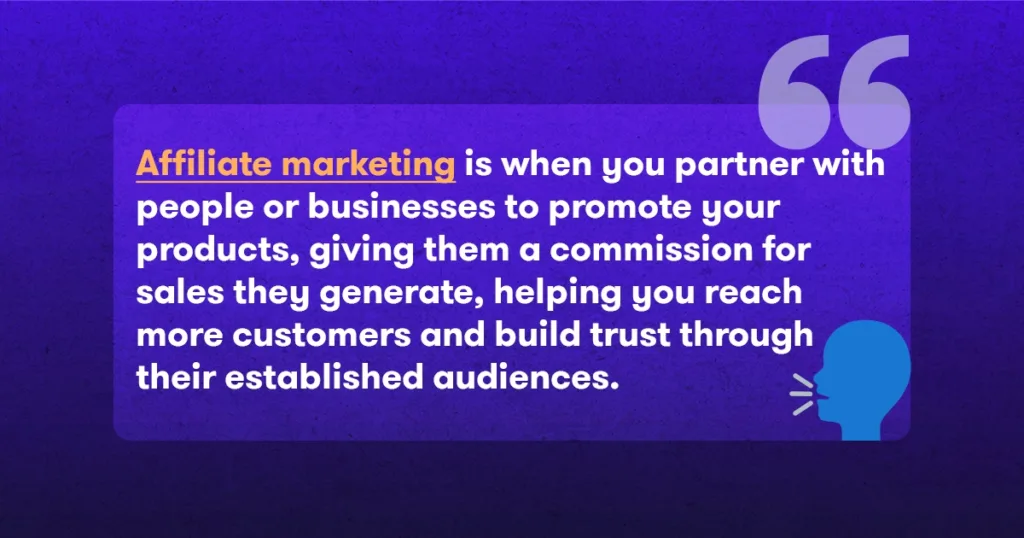
Starting with affiliate marketing can be a great move for your Shopify store, helping you reach more customers and boost sales. Here’s how to make it work in simple steps.
First, get to know what affiliate marketing is all about. To put it simply, it’s when you partner up with people or businesses who promote your products for you. In return, you give them a cut of the sales they help make. This can help you reach more people and build trust since you’re using affiliates who already have an audience that trusts them.
To kick things off, find the right people to be your affiliates. These could be influencers, bloggers, or anyone who has the right audience for your products. Just make sure they share your brand’s values so their promotions feel authentic and genuine.
Next, you’ll want to set up your affiliate program. Shopify has tools for this, or you can use apps like Refersion or LeadDyno. These help you keep track of sales and manage payments to your affiliates.
As you set up your program, consider offering attractive commission rates to stand out in your industry and motivate people to join.
Supporting your affiliates is crucial for their success and, by extension, yours. Equip them with the right toolkit—high-quality product images, sample social media posts, and unique tracking links. The goal is to make it as easy as possible for them to showcase your products.
Additionally, sharing your brand’s story and product highlights can empower them to promote your brand more effectively.
Also, the promotion of your affiliate program shouldn’t be an afterthought.
Actively seek out potential affiliates by leveraging your website, social media platforms, and direct outreach. Engaging with your community and even participating in relevant industry events can also present great partnerships.
Once you have everything up and running, pay attention to which affiliates drive the most sales and dissect their strategies for insights that could boost the program overall. Constantly refining your approach based on performance data ensures that your affiliate marketing efforts remain effective.
Lastly, transparency is non-negotiable. Ensure your affiliate program complies with legal requirements around disclosure, maintaining the trust of your customer by clearly identifying affiliate links as sponsored content.
By following these steps, your Shopify store can start to see more traffic, broaden its reach, and drive sales. Success lies in choosing the right partners, providing them with the tools they need, and continually optimizing your program based on insightful feedback and performance metrics.
Pro tip: Fostering strong relationships with your affiliates through regular communication and feedback will encourage their enthusiasm for your brand. Keep them informed about new products and any changes to your store, ensuring they feel valued and in the loop.
9. Implement Upselling and Cross-Selling
Adding upselling and cross-selling to your Shopify store is a smart move to help you make more money from each sale and boost the overall shopping experience for your customers.
Upselling means you suggest a better version of what someone is looking at, and cross-selling means you suggest other things they can buy that go well with their initial purchase, subtly guiding them to making more valuable purchases.
Shopify’s App Store offers a variety of apps that make implementing cross-selling and upselling strategies straightforward. These apps often come with features that allow for automatic product recommendations, customizable pop-ups, and smart product bundles.
- Look for apps with high ratings and reviews that fit your specific needs.
- Most apps will let you customize how your upsell or cross-sell offers look to match your store’s design. You can decide where these offers appear, such as on product pages, in the cart, or at checkout.
- You can set rules for which products are recommended as upsells or cross-sells based on what the customer is viewing or has added to their cart. This can be done automatically by the app, or you can manually select related products.
- Use the app’s analytics to see how your upsell and cross-sell strategies are performing. Look at which products are frequently bought together or which upsell offers have higher acceptance rates and adjust your strategy accordingly.
Tips for Upselling
Highlight the value. When suggesting higher-end alternatives, clearly highlight the benefits and added value of the upgraded product. For instance, if a customer is looking at a basic model of a gadget, show them how a slightly more expensive model offers significantly more features or better performance.
Use product pages wisely. On each product page, include a section that showcases upgraded versions or premium alternatives. Use compelling product pictures and bullet points to summarize the key advantages of choosing the higher-end option.
Tips for Cross-Selling
Relevant recommendations. On product pages and during the checkout process, display products that complement what the customer is already considering. For example, if they’re buying a camera, suggest a camera bag or an additional lens. Use algorithms or manually curate these suggestions to ensure they’re as relevant as possible.
Bundles and discounts. Create product bundles that offer a slight discount when items are purchased together. This not only increases the order value but also provides convenience and value to the customer. For example, a ‘starter pack’ for photography enthusiasts can include a camera, a lens, and a memory card at a bundled price.
Best Practices for Upselling and Cross-Selling
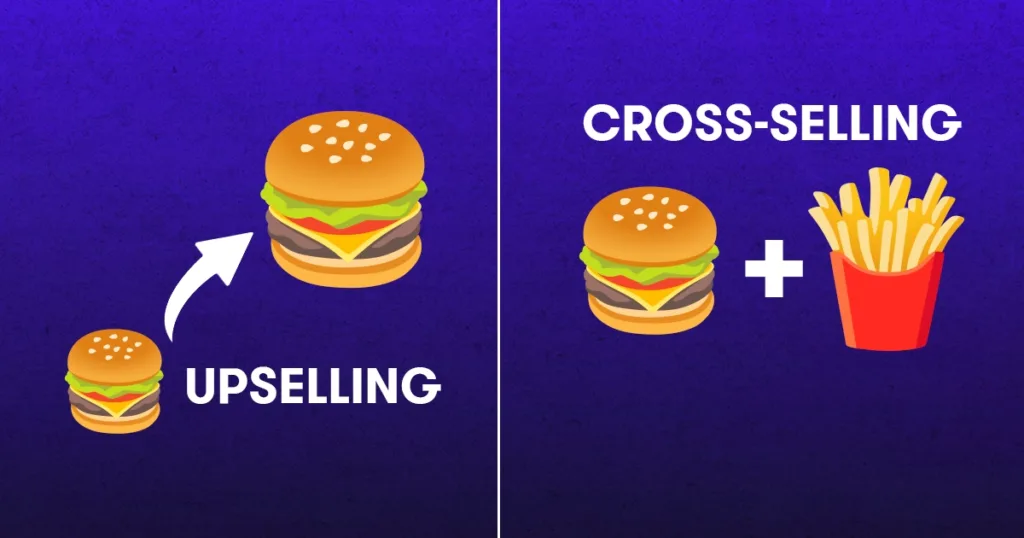
- Ensure that your upselling and cross-selling efforts are subtle and genuinely add value to the customer’s shopping experience. Avoid aggressive sales tactics that can lead to customers being annoyed and bouncing from your store.
- For upselling, the best time is when a customer is viewing a product or has added it to their cart.
- For cross-selling, the checkout process is an ideal time, as customers are already in the mindset to buy. Make sure these suggestions are clearly visible but not too intrusive.
- Ensure that all suggested products are relevant to the customer’s current selections. Irrelevant suggestions can diminish the perceived value of your recommendations and may even frustrate shoppers.
- Whether upselling or cross-selling, make sure the value proposition of any additional purchase is clear. Customers should understand why the higher-priced item is worth their money or how the additional products complement their purchase.
- For upselling, allow customers to easily compare the original product with the suggested higher-end option. Highlight differences in features, benefits, and price to help them make an informed decision.
Remember, the goal is to provide additional value to your customers, not just to increase their order size. When done correctly, these strategies can lead to a win-win situation where your customers feel taken care of, and your store sees a boost in revenue.
Continue learning:
Head of Content
After bouncing around tech start-ups and university literature programs, Joe has finally settled down as Billo’s Head of Content. Joe now spends his days writing ads about ads, teaching clients how to craft killer content, and combing through our web copy with a bold red Sharpie.

Authentic creator videos, powered by real performance data
22,000+ brands use Billo to turn UGC into high-ROAS video ads.
Social Commerce Trends To Watch In 2026
Social shopping is no longer a side experiment. As 2025 [...]...
Read full articleAd Hooks That Scale: Turning 1 Winning Angle Int...
Performance teams often think they need endless novelty, but newer [...]...
Read full article3 Ways Shopify Brands Use Billo + Moast Together...
User-generated content (UGC) is no longer just a nice-to-have, it’s [...]...
Read full article

